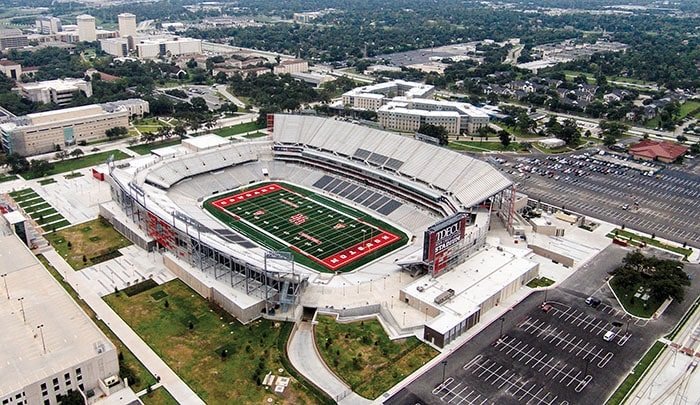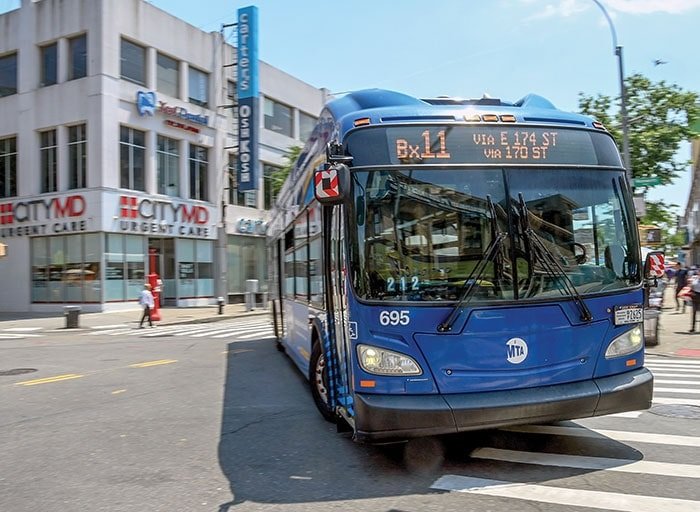Editor’s note: This is Part I of a two-part series on the benefits versus the increased integration requirements of using AVI / RFID (Automatic Vehicle Identification/Radio Frequency IDentification). Part I focuses on technology changes and longer-term expected pervasiveness. Part II will focus on some of the integration issues associated with using a vehicle-mounted “tag” for multiple purposes, including parking revenue control.
By now, we are all familiar with the AVI / RFID benefits refrain: faster throughput, lower operating costs, reduced shrinkage, increased driver security and enhanced customer experience. As RFID increasingly becomes an ordinary part of our daily lives, it’s useful to take a look at the influences that occurred over time to get us to this point, what we should prepare for as RFID goes through its current growth and change phase, and which issues are being addressed today that will have an impact on our industry for the next 20 years.
When the North Texas Turnpike Authority (NTTA) deployed the first U.S. Electronic Toll Collection (ETC) in Dallas in 1989, it was the first look many had at in-vehicle RFID (Radio Frequency IDentification) used for Automatic Vehicle Identification (AVI). Drivers were able to pass through the tollbooth areas without stopping, while having their toll directly charged against a prepaid account. While NTTA’s business model has changed over the years, the idea of a “toll tag” has caught on globally. Toll tags have proven a boon to drivers and toll authorities alike: The users don’t have to stop at tollbooths, and the authorities receive greater efficiencies and reduced costs. The cost benefits come from several areas, including reduced toll booth personnel, less time required to count and handle cash, and reduced bank fees from less cash counting.
In the beginning, most toll roads had booths in every lane (a legacy from the all-cash days) and most lanes were gated. AVI was sometimes installed in just a few lanes, which still required a driver to stop while passing through the tollbooths. Tollbooth attendants crossing lanes were at risk if they didn’t pay attention. Current ETC design incorporates AVI-only “open road” lanes, where there are no tollbooths and cars pass under the readers at highway speeds. This creates even maximum throughput and reduces the risk to attendants.
Violation Enforcement Systems (VES) mitigate the risk of non-toll tag users going through the open lanes and not paying. “Open road” lanes generally have camera systems deployed, taking pictures of the license plates of violators. Parking and toll roads have many of the same business requirements and objectives: increased throughput, reduced expenses, reduced shrinkage, increased auditability and most important, a happier customer.
Dallas has witnessed the growth and benefits of secondary application use of its TollTag: gated community access control, corporate headquarters parking security (e.g., EDS and Mary Kay), parking revenue control in downtown parking garages, at Dallas-Fort Worth and Love Field airports, and at fast-food restaurants (McDonald’s). These secondary uses promote an enhanced customer perception of the value of the tag and likely drives additional sales of tags, which in turn drives an increased tag base, to the positive benefit of the toll road.
AVI use for non-toll applications has crossed the chasm from the early adopter stage to mainstream usage. AVI use, particularly for gated communities, has enjoyed considerable and ever-increasing acceptance and use. Today’s systems have low incidences of technology problems as the technology is well understood and, in the tradition of electronics, is being manufactured with ever fewer parts, further reducing points of failure. While the science of RFID is well understood, the preponderance of operational issues stems not from non-functional products but rather from installation issues. There is a difference between the science of AVI and the art of installing AVI to achieve the desired operational characteristics. The easiest way to minimize buyer’s remorse is to make sure (1) that the operational performance characteristics of the equipment purchased matches the intended usage, and (2) that the installer is trained by the manufacturer in the “art of AVI installation.”
So, if AVI is so wonderful, why isn’t it at every entry point in America, especially garages? And why, in this age of advanced electronics, do the tags and readers still cost so much? The answer to the first question is standards and to the second, volume. Let’s examine each a little more.
For standards, it’s worthwhile to take a look at a different, older transportation model: the railroads. Early on, each railroad owner was able to set his own track “gauge,” or width between the rails. This in turn created different manufacturers of locomotives and rail cars. As you might correctly assume, trains couldn’t readily pass from one rail system to another. The rail cars would be unloaded at the terminus of one line and reloaded onto the cars of the line next in sequence — extraordinarily impractical. Yet, rail technology still provided a significant increase in the ability of America to move large amounts of goods quickly from one point to another, as opposed to wagon trains. In 1863, President Lincoln designated 4 feet 8_ inches as the gauge for the railroad to be built to the Pacific Coast. In 1887, all railroads changed to be consistent with the 4 feet 8_ inches standard gauge, which is still in use today. Instantaneously, rail commerce blossomed across the country, shipment time was reduced considerably, and the cost of goods dropped. This in turn eliminated a captive customer market, as all manufacturers were now competing against a common specification, so the associated costs for locomotives and rail cars in turn decreased. While this caused the demise of some manufacturers, customers profited by lower competitive costs and increased focus on quality. This is a business model that still stands today.
We literally stand now at the equivalent of 1862, the year before President Lincoln made his historic transportation decision. In the U.S., the toll technology market has settled on three different, incompatible offerings: From the mid-Atlantic Coast and north, it is overwhelmingly Mark IV technology, widely known as E-ZPass. In the South and in Florida, it is primarily Amtech Technology tags from TransCore, with different local brand names (e.g., SunPass, PikePass, TollTag) California and Colorado use an RFID protocol created by the California Department of Transportation, technically known as Title 21, which is manufactured by TransCore and Sirit and known broadly as FasTrak!
Locally, each of these types of tags is used for parking and access control.
As one might imagine, being able to use the same tag on another agency’s toll road takes some effort, even when the RFID technology is the same. However, different toll road authorities use different RFID protocols and tag types. This mishmash is headed for change.
Efforts are underway to define a new common frequency — in the 5.9GHz range — and communications protocol for toll roads. When this new standard becomes effective, two major events will occur: RFID readers and tags will become commodities, which should significantly reduce equipment costs. And toll authorities will then have to undertake the challenge of eventually converting all currently deployed tags and readers — a truly costly and not insignificant effort. The result should be that any single toll tag would be able to work on all toll roads equally well. There is a caveat here, though: The previous sentence is a technical statement and does not address the myriad business issues surrounding such inter-operability, e.g., how toll charges are properly debited and credited across toll authorities and state boundaries.
A common RFID protocol will benefit, directly and indirectly, all of us in the parking business by driving down reader and tag prices somewhat and by providing a single data and communications specification that all parking revenue control and access control manufacturers can use, instead of today’s current need for “regional” interfaces.
We’ve seen how toll roads play a significant part in the standards and protocols of the RFID technology that we use in the parking arena. To understand where the truly radical cost reductions will come from in RFID, we need to look at another industry: retail — specifically, the logistics and supply chain management aspects of the retail industry. Historically, the single largest impediment to much lower reader and tag prices has been volume or, more accurately, the lack of volume. When you as a facility owner/operator buy 100 or 200 or even 10 or 20 tags from your local dealer, requesting your specific Wiegand programming, it’s amazing that the tags don’t actually cost more than they do. Manufacturing 15 pink tags with a custom 36 Wiegand code does not lend itself to cost-effective volume production. To get to really cheap tags, we need get to really big volumes — like hundreds of millions or even billions. Those types of numbers don’t exist in our market, but they do exist in the retail market. Why? Because retailers want to tag individual items, tag the boxes those items are packed in, and tag the pallets on which the boxes are shipped. Now they have the billions we’re looking for.
Suppliers have been unwilling to spend the money to tag items if their retailers have the reader infrastructure to use the tag data. Conversely, retailers have been unwilling to invest in a reader infrastructure on the hope that maybe some of the suppliers might tag their products. Typical stalemate.
This logjam was convincingly broken in June 2003 when Wal-Mart announced that its top 100 suppliers would have until the end of 2005 to comply with its directive for RFID tracking. This was quickly followed by a similar announcement by the Department of Defense in December 2003. As many companies now jockey for position in this upcoming boom, we are seeing the outflow of this “tracking” technology into the access control and parking markets.
Two specific parking product offerings have their roots in the logistics and supply chain management (SCM) markets. Intermec Technologies (www.intermec.com) licenses its Intellitag technology to TransCore, which markets it under the brand name of eGo! And Matrics (www.matrics.com) licenses its RFID technology to Sirit, which markets the Identity ZiP product. Intermec and Matrics are among the scores of companies focusing their attention on the burgeoning need for new products and solutions in the logistics/SCM markets. Both the eGo and ZiP tags are new-breed label or sticker tags: non-battery, thin as a business card, and with read ranges comparable to the traditional non-battery tags (10 to 30 feet). Prices for these tags are well below the historical prices for non-battery tags from TransCore and Sirit, providing early cost benefits to users in our markets.
Adopting a 5.9GHz frequency standard and having the need for billions of supply chain management tags are the two events outside our industry that will create a convergence with wonderful implications inside our industry. Ultimately, that will put an AVI RFID tag into every car manufactured. Here’s how: For many years, Detroit has been looking at RFID as a solution to their SCM issues. If automobile suppliers put multiple tags on the parts during the manufacturing process, it would be simple for them to add a “consumer” tag, likely on the windshield. Think of such a tag as another identification method, similar to a vehicle identification number. If the tags are cheap enough and all operate on the same frequency, we end up with a common tag that can be used for all of our in-vehicle needs. At fast-food restaurants and drive-through businesses, on toll roads, and for access control and parking revenue control. Any location where we conduct a transaction from our car could conceivably be handled by such a tag. Our auto insurance and inspection information could easily be stored on “our” tag.
Even as we can see how current events will push change into our marketplace, even as we benefit from efforts outside our industry, technology issues and questions will come up. Here are two representative operational issues:
(1) Today, a Mobil Speedpass! user, for example, can go into a gas station and buy bubblegum and a newspaper and charge them at the counter via his Speedpass key fob. If my car comes with a built-in tag, I can see how I could use it to pay for gas at the pump, but what if I want to use it to pay inside for a newspaper?
(2) There has long been a desire in the security/access control market for a single credential — the “tag” that I use to enter the garage should be removable so it may be used to get into my office. We are just now seeing the melding of AVI RFID with proximity technology to address the single credential (www.hidcorp.com/pages/avi-tech-pr.html).
Will I be able to use the car tag and single credential tag in the same windshield without interference? Each of these valid operational issues will have to be worked out with the consumer in mind, and to the consumer’s satisfaction.
So far, we haven’t addressed technology issues such as ASCII vs. Wiegand, clearinghouses or issues of importance specifically to us. These will be discussed in Part II, when we will look at changes the parking revenue control and security/access control markets will need to face as we start down the road to a new world where every car has an AVI / RFID tag.
Michael Bigbee has been involved in the deployment of AVI / RFID systems in transportation markets worldwide since 1995. He may be reached at mbigbee@hotmail.com.
Side Bar 1
High Power-Low Power
Readers can be purchased as either “high power” or “low power.” Some can have their power settings adjusted at the time of installation. Tags are either non-battery (shorter read range, yet cheaper) or have a battery (longer read range, yet more expensive). By mixing and matching readers and tags, at one extreme one can create a read-zone that requires a full stop in order to read the tag at 6 feet or at the other extreme one can create a read-zone that supports a vehicle driving through at 40 mph and the tag is read from 40 feet away. The customer should work with the dealer to properly determine the required system performance in order to purchase the correct AVI components. The cheapest system may not provide adequate performance, while the most expensive system may be overkill. Do your homework.












